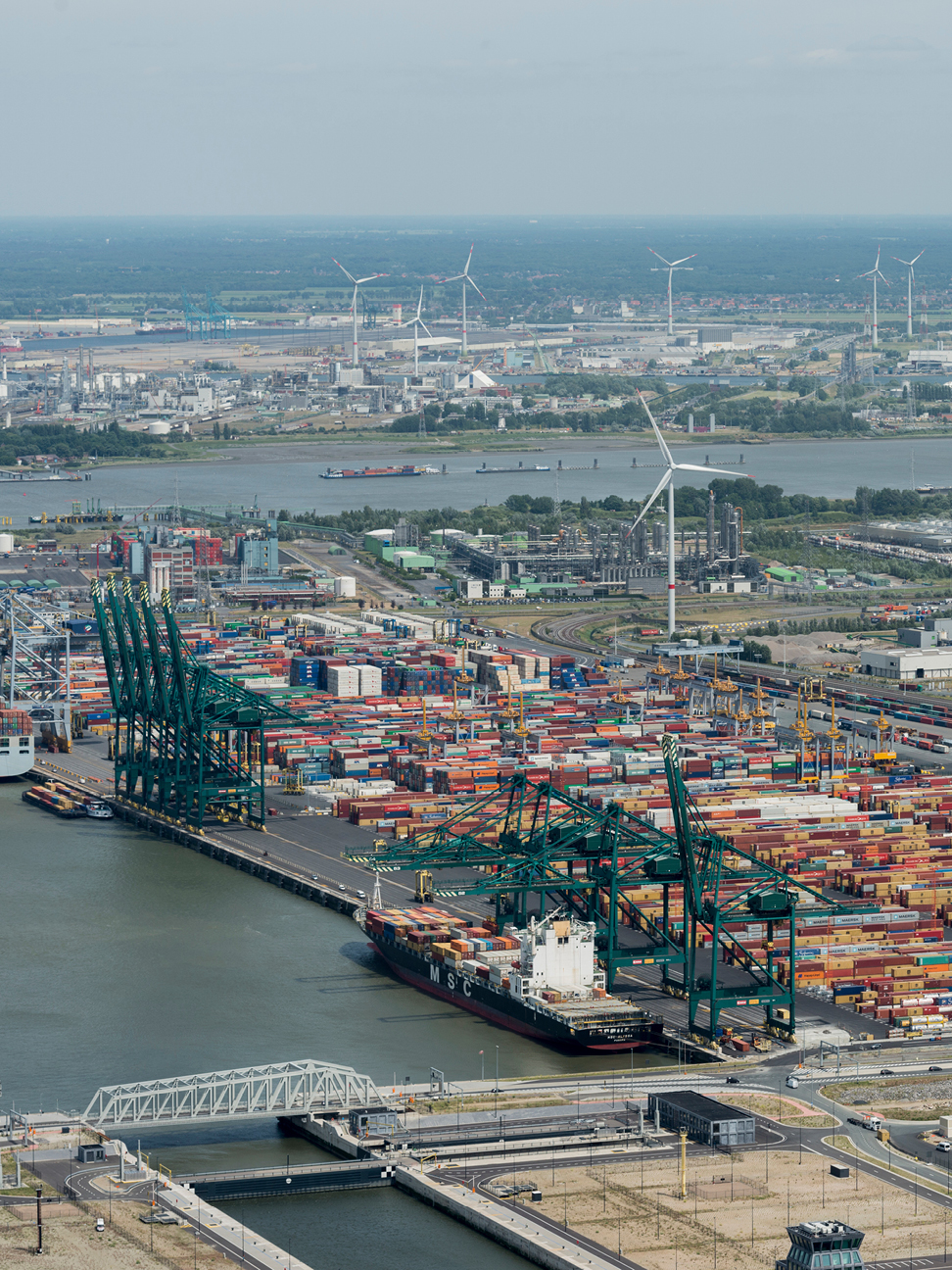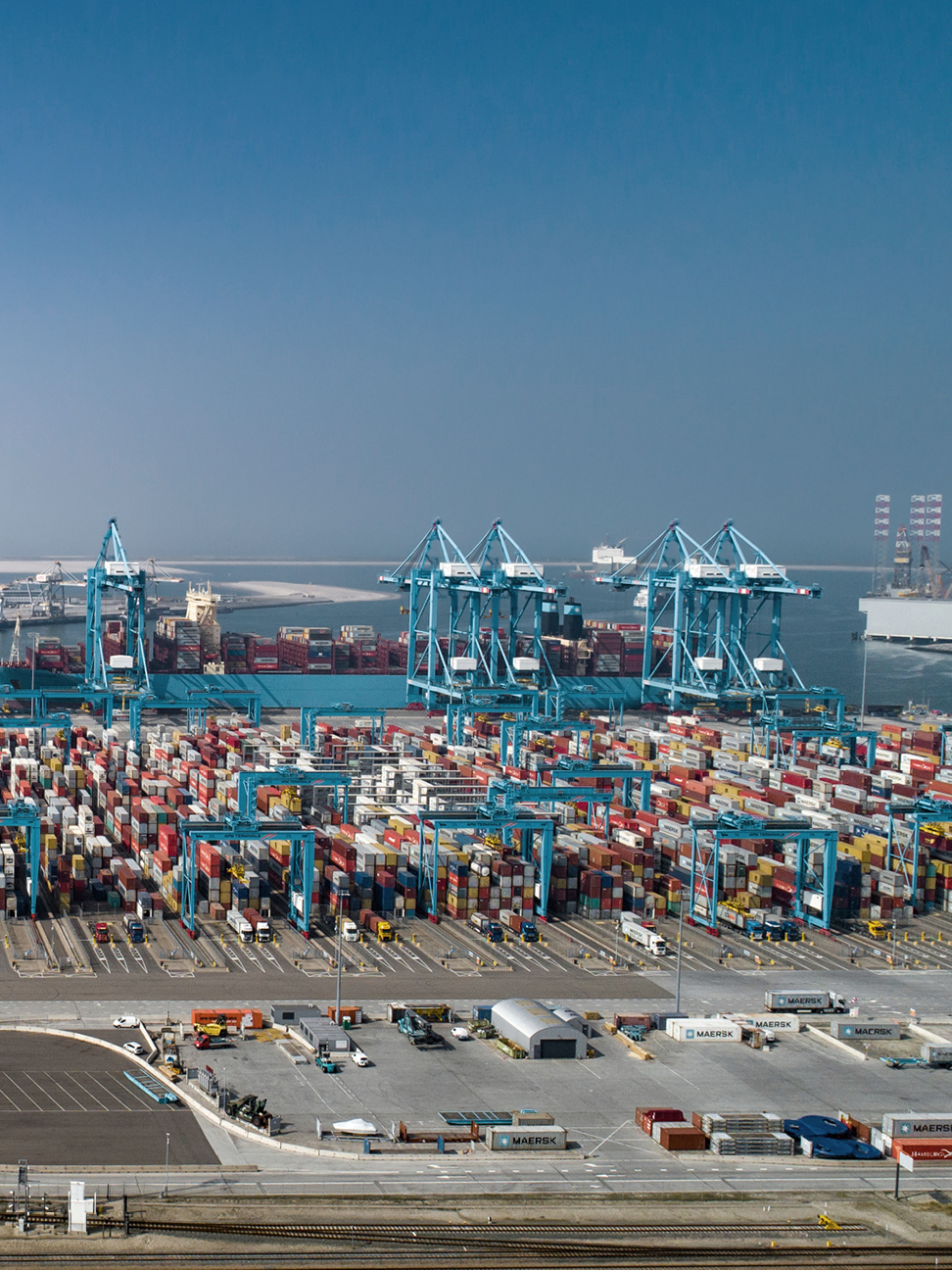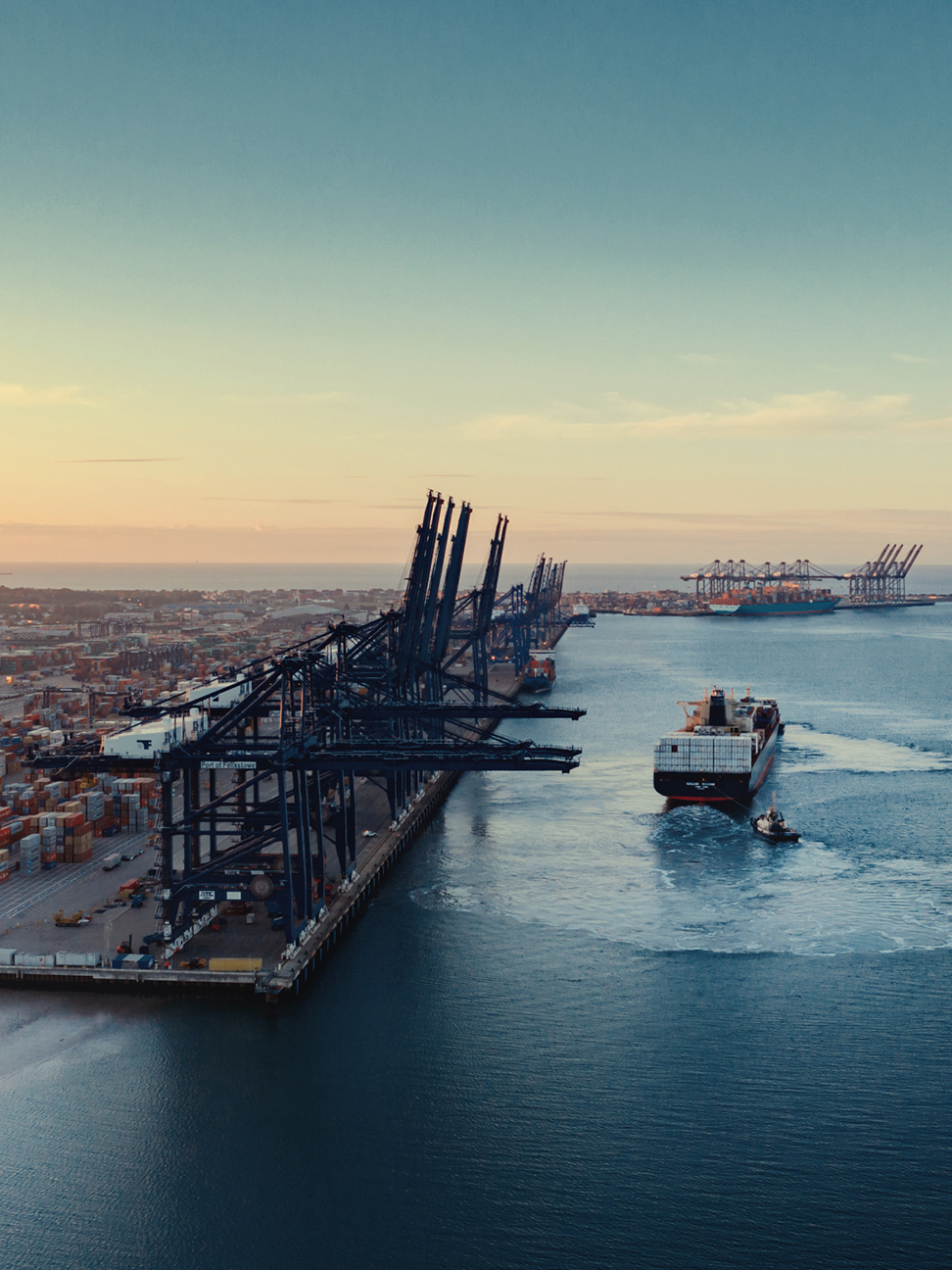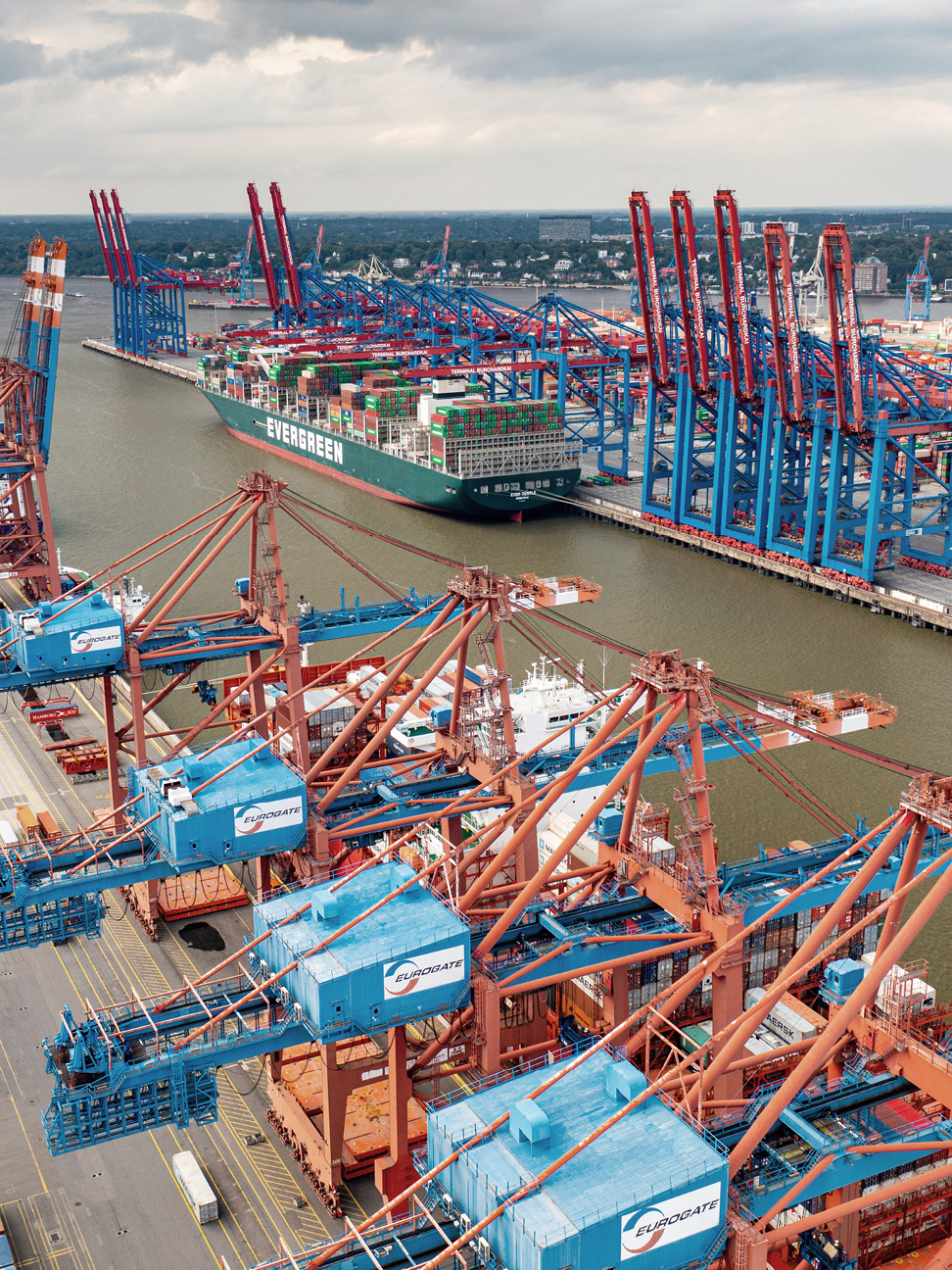Future Cities
2022 Global Seaport Review: Antwerp-Bruges, Belgium
Navigating evolving global seaport regions and their impact on industrial real estate
December 13, 2022 4 Minute Read

Antwerp-Bruges is the second-largest port in Europe and the economic engine of Flanders, supporting a dynamic industrial real estate market with low vacancy and high rent growth. Strategic investments, such as the recent merger with the Port of Zeebrugge, new tidal dock plans, and the ongoing Oosterweel Link development, will secure its place as a leading port and driver of commerce into the future.
Overview
One of the biggest drivers of the Belgian economy is the newly unified Port of Antwerp-Bruges, which merged the ports of Antwerp and Zeebrugge in April 2022. It is the second-largest port in Europe and an essential link in global supply chains, with more than 300 liner services to over 800 destinations. Each year the port handles around 290 million tonnes of international cargo.
The port directly and indirectly employs approximately 164,000 people, representing 6% of total employment in the Flemish Region and 3.4% in Belgium. The port generates added value of more than €21 billion each year, accounting for 4.5% of Belgium’s GDP, making it the country’s largest economic contributor.
Antwerp-Bruges is Europe’s most central seaport, its largest for vehicle transshipment and among the largest for break bulk. Seagoing vessels can transport goods 80 kilometers inland into the heart of Europe. The port is ninth on the United Nations Port Liner Shipping Connectivity Index.
Figure 1: TEU volumes
Source: CBRE Research, Port of Antwerp Bruges, Port Technology, 2022.
Figure 2: Population demographics
Source: macrotrends.net, 2022.
Europe’s most central seaport, with vessels able to transport goods 80 kilometers inland
Port features
Antwerp-Bruges handled more than 12 million TEUs in both 2020 and 2021. Prior to the pandemic, container terminals at Antwerp were almost full, operating at 90% capacity. The Extra Container Capacity Antwerp (ECA) project is addressing this via a new container terminal at the Northern Inlet basin and a new tidal dock, which will add 7.2 million TEUs of additional container capacity.
As a result of the deepening of the Western Scheldt navigation channel, the port can support container ships with approximately 15.6-meter (50-foot) drafts, which makes the port accessible for ships holding up to 23,000 TEUs. Antwerp is known for its high container handling productivity, with 40 moves per crane per hour.
The Port of Antwerp-Bruges is also home to more than 63 million sq. ft. of temperature-controlled warehouses for storage of perishables, life sciences and healthcare products. Zeebrugge also handled 2.2 million new cars in 2021, making it the largest car port in the world.
Figure 3: Port details
Source: CBRE Research, Port of Antwerp Bruges, 2022.
Trade partners
The port’s biggest trade partners include Germany, France, Netherlands, the U.K., the U.S. and Ireland. In 2021, the largest portion of trade was within Europe (86.5 million tonnes). Trade was also high with North and Central America (39 million tonnes) and the Middle and Far East (also 39 million tonnes).
Intermodal transportation
Antwerp-Bruges is supported by a range of intermodal transportation including shortsea, barge, rail, road and pipeline. In 2021, 34% of imports were transported by road, 44% by barge, 7% by rail and 15% by pipeline.
The port’s central location in the European road network makes it one of the fastest routes to almost all consumers and industrial centers in Belgium, the Netherlands, Germany, France, Switzerland, Italy and other European destinations. It’s considered a cost-effective choice for companies transporting goods to end customers.
Antwerp is also a central hub in three European rail freight corridors, along with frequent rail traffic to China and Korea using inland terminals. In 2021, 24 million tonnes of freight were transported by rail, and 108.5 million tonnes were transported by barge.

Real estate influence
Antwerp has a well-developed logistics market largely due to its excellent transportation connections, which supports its market-leading chemical and pharmaceutical clusters. Together with Brussels and Ghent, Antwerp forms part of the 7.7 million-sq.-m. Golden Triangle logistics hub. To the south of Antwerp is the A12/E19 corridor with direct access to Brussels, which is the primary domestic logistics cluster in Belgium, with links to France and the Netherlands on the periphery. The Oosterweel Link project in Antwerp, Belgium’s largest infrastructure project, will greatly enhance commercial road connectivity around the port and city.
Demand for logistics space is high but hindered by the lack of available land. Take-up is driven by build-to-suits and the redevelopment of obsolete facilities. Vacancy in Antwerp was below 1% as of Q2, helping push rents up 12% year-over-year to €58 per sq. m. per year, making it the second-most expensive logistics market in Belgium after Brussels.
Figure 4: Industrial & logistics market stats
Source: CBRE Research, H1 2022.
Explore Global Seaports by Port
Related Services
- Property Type
Industrial & Logistics
We represent the largest industrial real estate platform in the world, offering an integrated suite of services for occupiers and investors.
- Property Type
Ports
Manage all your integrated logistics needs with services that combine our industrial roots with extensive supply chain experience.
- Consulting
Supply Chain Advisory
CBRE Supply Chain Advisory helps you solve complex business problems and build distinct advantage through supply chain transformations.
Insights in Your Inbox
Stay up to date on relevant trends and the latest research.









